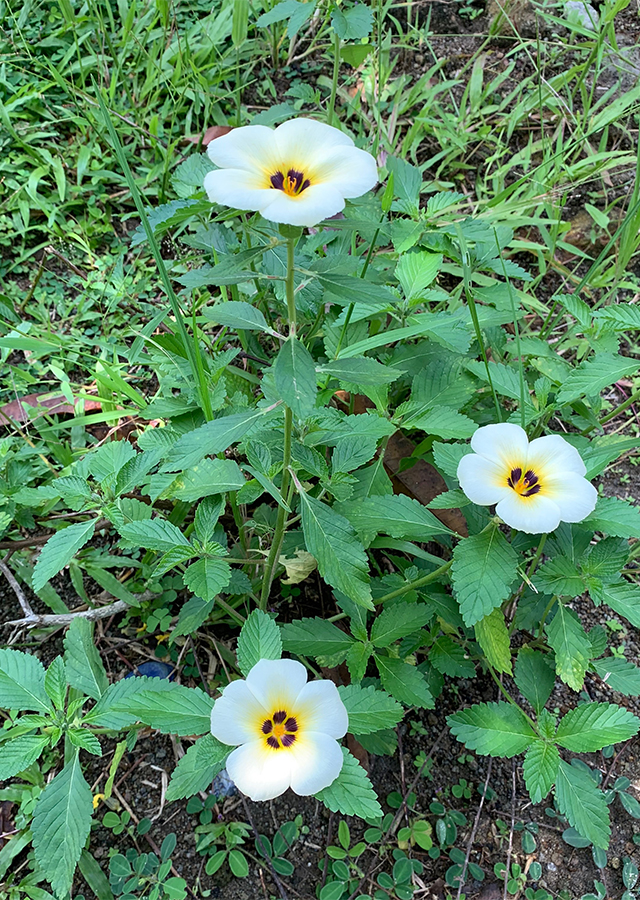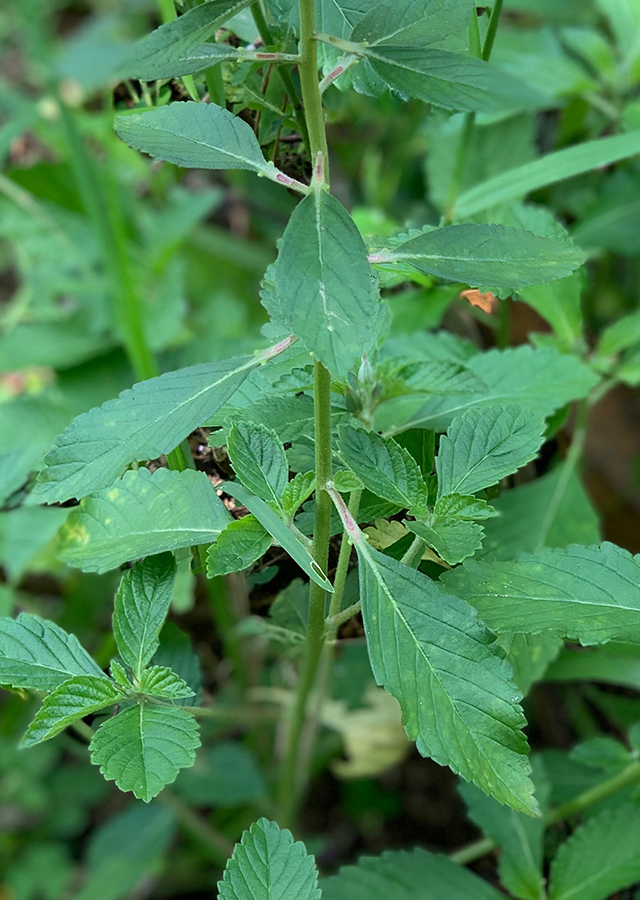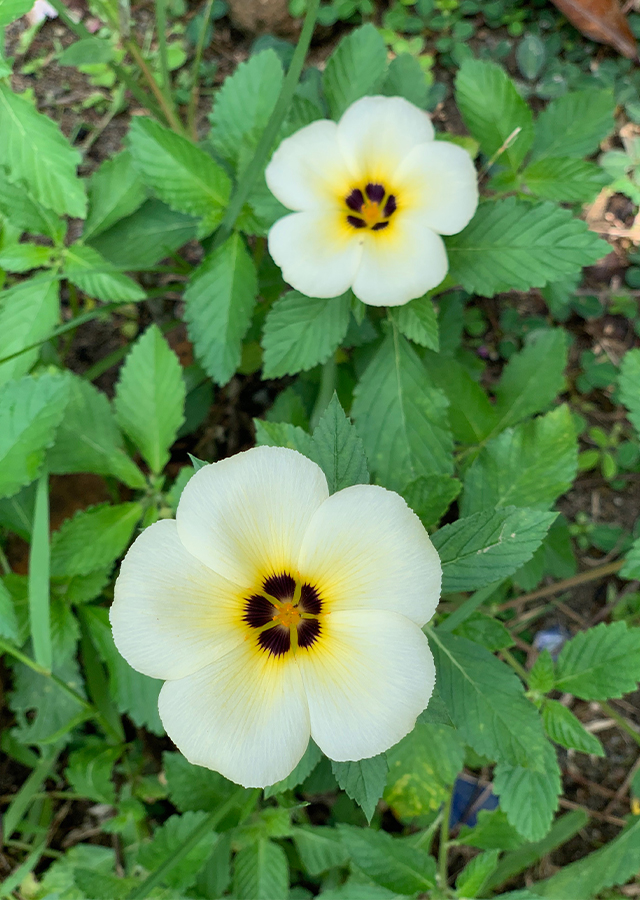Traditional Herbs from Turnera subulata
smooth_blood_circulation
- Take fresh roots of the flower\u00a0at eight o'clock, wash until clean.
- Boil with 3 glasses of water until one glass remains.
- After it cools, strain,\u00a0 then drink twice a day, each half a glass.
treating_swelling_and_bruises
- Prepare enough fresh leaves of eight o'clock flowers, wash them thoroughly.
- Pound and add enough whiting and stir flat.
- Stick it to the swollen body.
What is Turnera subulata Looks like??



Parts of Turnera subulata that could be used
- Leaves
- Flowers
- Roots
Turnera subulata Distribution
Turnera subulata is a plant originating from the West Indies, Brazil and Central America which later became naturalized in the Indian subcontinent, and has spread to all parts of the world. In Indonesia, T. subulata is often found in Java, Sumatra and Kalimantan. This species is usually planted as an ornamental plant, a border plant, but sometimes it grows wild. In plantations, it is often planted around main crops as a pest control because it can attract several predatory insects and be a source of nectar and food source for Sycanus insects. (a type of predator that preys on fire caterpillar pests that are detrimental to oil palm plantations). Apart from that, T. subulata has also been used for centuries in traditional medicine to treat certain diseases of the body. People in the northeastern region of Brazil generally use it to treat amenorrhea and dysmenorrhea.Agroecology of Turnera subulata
T. subulata is found growing wild in abandoned lands, fields, burial grounds, edges of waterways, and generally grows in groups. Easiest to find in dry sandy areas at an altitude of 10-250 m above sea level, in places exposed to direct sunlight or slightly protected. However, this species must receive full light to bloom fully. Eight o'clock flowers can grow in a variety of soils.
Morphology of Turnera subulata
- Strong and dense taproot, dirty white.
- Stem erect, cylindrical, woody, smooth, green-brown.
- Single leaves (unifoliate), green, lanceolate, have toothed leaf edges, leaf tips pointed (acuminate), leaf base rounded or blunt (obtuse), spiral leaf arrangement, stalked. There are a pair of round, greenish to yellowish glands at the base of the leaf blade on both sides of the petiole pinnate, slightly protruding between the veins. The surface of the leaves is covered with short white hairs. The size of the leaves is smaller than the leaves\u00a0Turnera ulmifolia.
- Bisexual flowers, large, dark-eyed, consisting of 5 petals (petals) oval or egg-shaped, cream-white with yellow around the middle (flower) which is black or dark brown, the crown is also slightly hairy. There are 2 forms of flowers, namely flowers thrum where the stamens (male, the pollen-producing part) are taller than the pistil (female, egg-producing part) and pin flowers where the stamens are shorter than the pistil. Flowers cannot self-pollinate, requiring pollen from other flowers to produce seeds. The flowers open around 8 am and wilt around 12 noon. The flowers appear in the axils of the higher leaves.
- The fruit is broadly egg-shaped, with more than 30 seeds.
Cultivation of Turnera subulata
Plant propagation through seeds, cuttings and dividing clumps.
Turnera subulata, more details :
Chemical Content of Turnera subulataSaponins, polyphenols, flavonoids, kaempferol, steroids, phaeophytin, limonene, cineol, terpinene, phenolics, terpenoids, benzenoids, alkaloids.
Benefits of Turnera subulata
Efficacious as a tonic and improves blood flow, treats boils, arthritic joints accompanied by swelling, swelling due to bruises, relieves inflammation of the throat, relieves stress, overcomes digestive disorders (such as flatulence, lack of appetite), weakness after recovering from serious illness, diabetes, hypertension , chronic pain, amenorrhea (absence of menstruation or menstruation), dysmenorrhea (menstrual pain), treating tumors, influenza, wounds, gastrointestinal and respiratory diseases. Has anti-inflammatory, antibacterial, antibiotic and antioxidant properties.
Simplisia of Turnera subulata
- Prepare enough fresh white eight o'clock leaves, wash thoroughly with running water and then drain.
- Dry in the sun or in an oven temperature\u00a040 \u00b0C\u00a0until the water content\u00a010%.
- Store in a clean\u00a0container and airtight.
Another Facts for Turnera subulata :
Synonym of Turnera subulataTurnera elegans Otto, Turnera mollis Kunth, Turnera peruviana Willd. ex Schult.
Habitus of Turnera subulata
Bush. Erect, annual shrub, growing to a height of around 30-80 cm.
Habitat of Turnera subulata
- Mainland
No comments:
Post a Comment